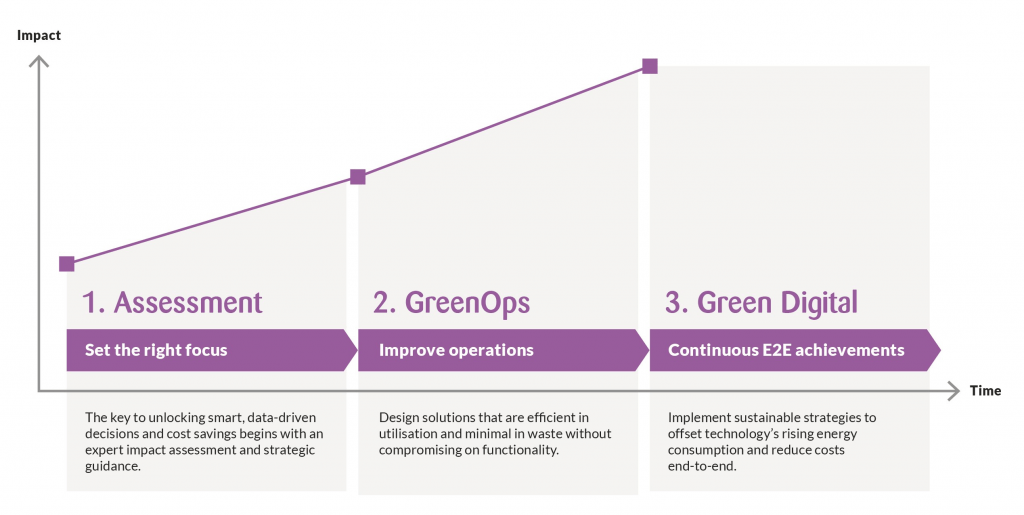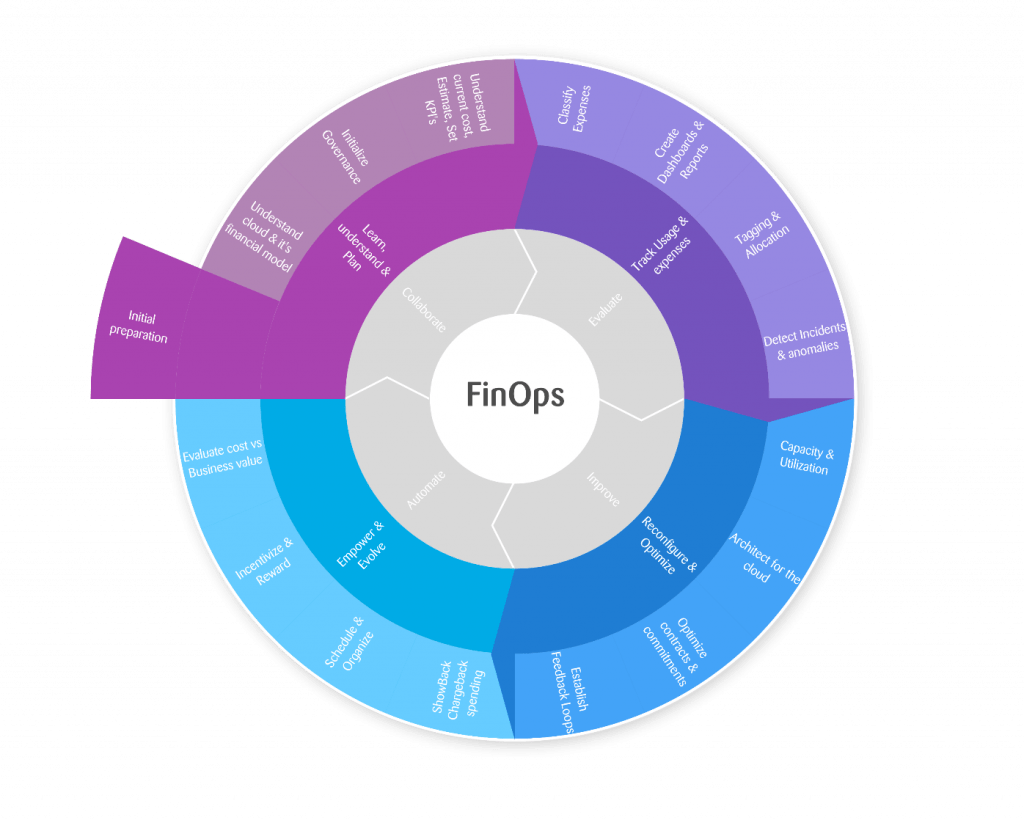In today’s dynamic business landscape, the insurance industry faces a dual challenge: delivering value to customers while optimising operational costs. Recent studies reveal that a significant portion, around 40%, of organisations find themselves entrenched in the ‘cost inefficient’ quadrant, struggling to strike the delicate balance between expenditure and profitability. However, amidst this challenge lies an opportunity for innovation and transformation through sustainable cost efficiencies.
Traditionally, sustainable IT management was viewed primarily through the lens of environmental responsibility. However, the paradigm has shifted, recognising that sustainability is not just an ethical obligation but also an economic imperative. In the realm of insurance, every watt saved translates into a penny earned, and each sustainable practice adopted represents a tangible step towards building efficient cost structures.
The key to unlocking sustainable cost efficiencies in insurance lies in the ability to simultaneously improve the combined ratio – the central measure of success for insurance organisations– while fulfilling the broader responsibility as an insurer to promote sustainability. These dual objectives form the cornerstone of a strategic approach to cost management within the industry.
A structured and strategic approach is paramount in pursuing sustainable cost efficiencies within the insurance industry. The three-step methodology depicted in Figure 1 offers a comprehensive framework for insurers to enhance their operational effectiveness and fulfil their environmental and social responsibilities.
Insurance companies can navigate the complexities of cost management while advancing sustainability objectives by systematically assessing current practices, embracing GreenOps principles, and leveraging GreenIT initiatives. This introduction sets the stage for an in-depth exploration of each step, elucidating their significance in driving tangible results and fostering a culture of innovation and responsibility within the industry.

1. Assessment
The journey towards sustainable cost efficiencies begins with a comprehensive assessment of existing processes, systems, and resource utilisation. This entails thoroughly examining energy consumption patterns, waste generation, and carbon footprint across the organisation’s operations. By identifying areas of inefficiency and environmental impact, insurers can lay the groundwork for targeted interventions.This should include complete coverage measurement across all categories of ICT per the GHG Protocol, ICT Sector Guidance, Product, and Scope 3 Standards and in compliance with ISO standards (fully compliant with ISO/IEC 21030 for software carbon intensity measurement and complete adherence to ISO/IEC 20968:2002 for software engineering and functional size measurement) to provide a context for action and the creation of a digital carbon reduction plan that aligns with the organisation’s overall net-zero commitment.Assessment data enables informed action and setting targets (KPIs and OKRs) against which the GreenIT strategy and execution can be managed. For example, KPIs may include an average reduction of 50% of emissions in software applications. FSI organisations that have been assessed can, on average, identify that ICT accounts for 20-25% of all emissions. Other guidelines include, for example, views on application hygiene, systems availability, and strategies to optimise people locations for optimal software emissions reductions.
2. GreenOps
GreenOps, or Green Operations, integrates sustainability principles into insurance companies’ core operational strategies and practices. This encompasses initiatives such as optimising energy usage in office spaces, promoting paperless workflows, and implementing eco-friendly procurement policies. By fostering a culture of sustainability within the organisation, GreenOps initiatives drive tangible reductions in operating costs while aligning with broader environmental objectives.
An often-discussed element of GreenOps is Cloud usage, particularly FinOps (see Figure 2), a cloud financial management discipline and cultural practice that enables organisations to get maximum business value from cloud computing. FinOps goes beyond cloud cost management by encompassing the technical elements of cloud expenditure and the financial and operational elements. It involves collaboration among engineering, finance, and business teams working together to make data-driven spending decisions.

3. Green Digital
Green Digital initiatives leverage technology to drive sustainability and cost efficiencies across IT infrastructure and systems, always aligned to business drivers and client needs. In particular, Green Digital massively involves the human factor in the form of requirements, training, and awareness, thus building upon GreenOps. Figure 3 illustrates all relevant building blocks of Green Digital initiatives.By embracing Green Digital practices, insurers can reduce energy consumption, mitigate operational risks, and enhance the scalability and resilience of IT operations – all while realising substantial cost savings over the long term.It also makes sense to build a GreenIT framework and approach that delivers against the metrics and target reductions set for the IT organisation. This encompasses sustainable software engineering and design, education, DevSustainOps maturity pathways and sustainable IT procurement practices to control and manage scope. The Green Digital approach reinforces the need to rationalise, remove legacy, application modernisation and make the best and most efficient use of clean cloud computing.Education promotes awareness of ICT’s impact on Global emissions and educates teams on available sustainable engineering and best practices. This will lead to more efficient software and measurement of software-based emissions that are ISO-compliant from the outset. Regular application reviews that measure software’s impact at application and code levels enable an organisation to develop an ongoing action plan to reduce carbon emissions directly across the software estate.People and requirements must be aligned with business drivers and insurance trends. Figure 4 provides an overview of current insurance trends and explains the correlation with Green Digital initiatives for a select trend.

In the realm of sustainability within the insurance industry, the focus extends beyond mere cost-cutting measures within IT infrastructure. Several key areas are integral to promoting sustainability practices, exemplarly highlighted for the “war for talents”.

In essence, sustainability in the insurance industry encompasses multifaceted efforts beyond IT cost-cutting. From optimising claims and repair processes to innovating insurance products and empowering distribution channels, insurers actively integrate sustainability principles into their operations to foster positive environmental and societal impacts.
In the insurance industry’s competitive landscape, sustainable cost efficiencies represent a strategic imperative for driving value and responsibility. By embracing a holistic approach that integrates assessment, GreenOps, and Green Digital initiatives, insurers can optimise operational costs, improve the combined ratio, and fulfil their broader commitment to environmental stewardship. In doing so, they pave the way for a more resilient, efficient, and sustainable future for the insurance industry as a whole.
Zühlke is recognised by Gartner as a leading vendor and “Trusted Partner” in the global insurance industry. We assist our clients in achieving sustainable efficiency, scale and reduction in cost-to-own. We curate, integrate and orchestrate best of breed services and products for fast time to value with teams experienced in delivering within complex regulated environments. Founded in 1968 in Switzerland, Zühlke operates across 17 European and Asian locations.
Zühlke is proud to partner with GoCodeGreen, a world-leading, independent ClimateTech company focused on measuring and identifying actions to reduce digital products and services’ carbon and environmental impact. Go Code Green is a two-time Earthshot Prize nominee, partnered with the ITU, the United Nations specialised Information and Communication Technology agency, and a Certified B Corp.
Article originally published on Zuhlke.com
Authored by Gareth Edwards, Adam Goran & Dr Christian Straube